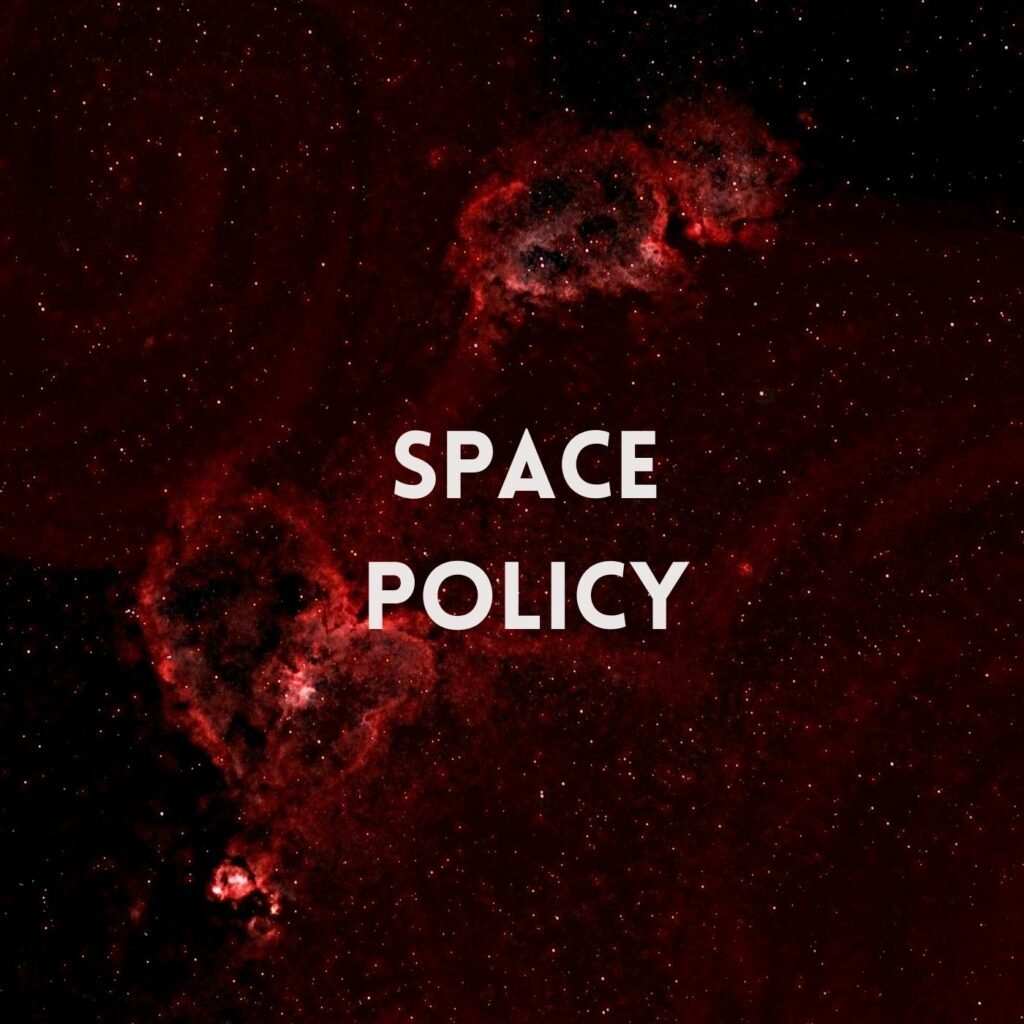
Space is no longer the final frontier for just scientists and astronauts; it’s now a global arena for innovation, investment, and diplomacy. But as the pace of space exploration and satellite technology accelerates, the question arises: Who sets the rules in space? The answer lies in space policy, a vital set of global rules guiding how nations and companies operate in space.
In this blog, we’ll explore what space policy is, why it matters, and how it shapes the future of space exploration and satellite development. Whether you're curious about space or studying policy, this guide offers a simple yet insightful look at what’s shaping its future.
What Is Space Policy?

At its core, space policy refers to the laws, regulations, and strategic priorities that govern activities in outer space. These policies are developed by governments, space agencies, and international bodies to guide everything from satellite launches and data sharing to planetary defense and space debris management. In simple terms, space policy answers questions like:
Who is allowed to launch satellites?
What happens when two nations claim the same orbit?
How do we manage risks like space debris or space-based warfare?
Why Space Policy Matters for the Future

As space becomes more crowded and commercially active, having well-defined policies ensures safety, sustainability, and international cooperation. Here’s why space policy is crucial to shaping the future of both exploration and satellites.
1. Enabling Global Collaboration
Modern space missions often involve multiple countries and private companies. Think of the International Space Station (ISS) — a joint effort by NASA, Roscosmos, ESA, and others. Without unified policies, such collaboration would be chaotic.
2. Regulating Commercial Activity
Companies like SpaceX, Blue Origin, and OneWeb are leading the charge in satellite launches and space tourism. Space policy helps regulate these ventures, ensuring they don’t harm the environment, interfere with national security, or violate international agreements.
3. Managing Satellite Traffic

As of 2024, over 9,000 satellites orbit Earth, and that number is rapidly increasing. With mega-constellations like Starlink adding thousands more, space traffic management is vital. Policy frameworks ensure safe spacing, data sharing, and collision avoidance.
4. Promoting Sustainability in Space
Satellites that become inactive turn into space debris, posing risks to operational systems and future missions. Space policy includes guidelines for end-of-life disposal, deorbiting, and even “space junk” cleanup technologies.
How Space Policy Affects Satellites
Satellites are essential to everyday life, the power of GPS, the internet, television, military surveillance, and even climate monitoring. But without a space policy, the satellite ecosystem could quickly spiral into chaos. Key Ways Policy Shapes Satellite Operations:
Licensing and Launch Approval
National space agencies (like NASA or the FCC in the U.S.) issue launch licenses and ensure satellites meet safety and compliance standards.
Orbital Slot Allocation
Space is vast, but useful orbital paths are limited. International bodies like the ITU allocate orbital slots and radio frequencies to prevent interference.
Data Protection and Privacy
Policies regulate how satellite data is collected, stored, and shared, especially when it involves national security or personal privacy.
Space Debris Mitigation
Operators are often required to submit debris mitigation plans and follow responsible end-of-life procedures for their satellites.
The Role of International Space Law
Outer space is not owned by any single nation, which makes international space law essential for governing activities beyond Earth. The cornerstone of this legal framework is the Outer Space Treaty of 1967, signed by over 100 countries. It outlines foundational principles: space is open to exploration by all, no nation can claim ownership of celestial bodies, and all space activity must be peaceful. It also holds nations accountable for anything they launch into space.
Building on this foundation, new agreements like the Artemis Accords, led by NASA and partner countries, are shaping modern space collaboration.
Space Policy in the U.S.
In the United States, space policy is set through a mix of federal legislation, executive orders, and agency-level guidelines. The National Space Council, re-established in recent years, coordinates U.S. space strategy across civil, commercial, and military sectors.
Agencies like:
NASA (civil exploration and science),
FCC (communications and licensing),
FAA (launch regulations), and
DoD (national security)
All play a role in ensuring that U.S. space activities align with national goals and international obligations. The U.S. has also pushed forward policies supporting commercial innovation, making it easier for companies like SpaceX to thrive while adhering to global norms.
Case Study: NASA, SpaceX, and the Private Sector
One of the best examples of space policy in action is the public-private partnership between NASA and SpaceX. Through initiatives like the Commercial Crew Program, NASA contracts SpaceX to transport astronauts to the ISS.
To update U.S. policy that encourages private sector involvement, SpaceX has also launched thousands of Starlink satellites, expanding internet access worldwide but also sparking new regulatory discussions around light pollution and orbital congestion. This balance between innovation and regulation is a direct result of adaptive space policy.
Learn About Space Policy
For those interested in shaping the future of space through governance, there are growing opportunities to learn about space policy. Many universities now offer courses in space law, aerospace policy, and international relations. Global organizations also publish frequent updates on trends, challenges, and legal developments in this field.
Exploring space policy isn’t just for lawyers or scientists — it’s a vital area for diplomats, business leaders, and environmentalists too.
Conclusion:
As we push further into space, space is becoming a shared domain of nations, companies, and even individuals. Without a forward-thinking space policy, the risks of conflict, overcrowding, or environmental damage increase.
Whether it's launching a weather satellite, landing on the Moon, or cleaning up orbital debris, the decisions made on Earth through space policy will continue to shape the future of space exploration. By understanding how these policies work, we not only protect our place in the universe but also make sure it’s accessible, peaceful, and sustainable for generations to come.







